
Mountain guide Polly Harmer writes about her journey from keen British trad climber to alpine addict...
I grew up about three miles north east of Rivelin Edge, near the lesser-known crag Agden Rocher, just over the hill from Stanage. When I was emerging through the murky waters of adolescence, climbing was there for me. Doors were hanging wide open all over the place to welcome me into trad climbing. I was fortunate to be born in a climbing-friendly place, but I felt that even if I was a bit less lucky I still would've found my way there. Those crags and climbing walls, their moments, the metaphors, the dreams and the friends I would make through climbing were calling and they were only a bus ride away.
Opening the door to alpine climbing, however, felt less intuitive. The Alps can feel elusive, exclusive, expensive and hard to figure out where, when and what - and what may or may not fall onto you. For me, it was a series of events including a hitch hike ride, a work trip, a camp site and an auspicious meeting of a new friend at a wedding which together conjured my entry into this magical world.
Last year, I spoke at the inaugural Women in Mountain Training Conference and someone asked me a question about how to get going with alpine climbing if you're already a trad climber in the UK. Considering the associated skills, kit, locations and costs and the many choices there are to make, it's a fair question.
There's so much adventure to be had in the Alps and a lot of awesome rock climbing, so it seems a shame if people are deterred from this playground. If you're a trad climber and you're happy climbing multi pitch routes, you've already got most of the skills you need to make your way in the Alps. There's some nostalgia which rises up in recalling how we made these first trips happen; they're special times. Here are some pointers and a few suggested spots, which might help you get your rack up high.
1. Play to your strengths
If you're a trad climber at home, start your trip off by going trad climbing in the Alps. You can suss out other ideas from your bivi spot or the hut while spending time doing something you already do. There are loads of places you can go trad climbing without needing many mountaineering skills or much kit. Approach in trainers through the wonderful mid alpine meadow where the air is sharp, marmots, butterflies and ibex guide you on up steep winding tracks and ladders to precious spots where life is simple.
Then there's not much to do but slip out of your trainers into rock boots and rope up like you always do. Equally, if your thing in the UK is scrambling or winter climbing keep it simple and make sure the trip plays to your strengths. Ultimately alpine climbing in its fullest form utilises all the disciplines of climbing and mountaineering. If you start with what you're confident with at home and branch out from there, you'll end up with a safer and less holey skill set than many new alpinists.
2. Minimise logistics and costs
Take the lift or do the walk in once and then stay in a hut or find a bivi spot for a few days. Taking the lifts are expensive, so if you do three routes while you're up high you're getting 3 for the price of 1. The walk-ins can take up to four or five hours for some places so it can be less realistic than you imagine to walk in sweating in the alpine sun and climb a route on the same day. This sets you up for getting a load of climbing done once you're up there, and figuring out some of the different challenges of alpine rock.
Take lots of food, a comprehensive guidebook and go watch the world from up high; see the light change and start to feel more comfortable in this initially intimidating environment without needing to pass through lift queues and freshly laundered tourists too often. While you're up there you can suss out other areas which are often visible across the valley and bump into climbers with recommendations of other places. Once, in 2012, my best pal and I did a 3 week climbing trip to the Alps for £250 each and we did a lot of climbing with this approach.
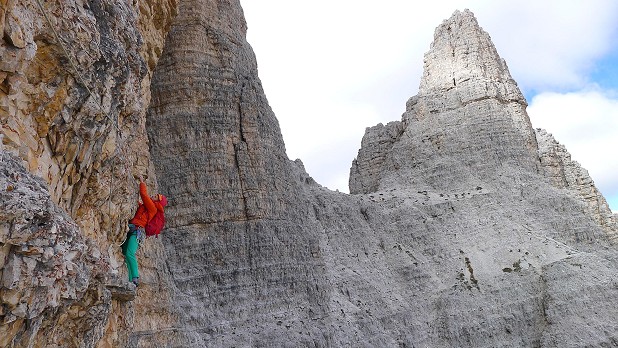
3. Demystify the risks
I love the mystique around alpine climbing but in reality it can be a barrier for people getting out and doing some good climbing. There are a few risks which are specific to certain alpine environments. A lot of these risks can be mitigated through awareness, so I'll highlight elements you need to think about, but of course you'll need to explore them more deeply as you plan your trip.
Glacier travel: if you're walking on a wet glacier (which is a glacier covered in 'fresh' snow from the past year) you should rope up or you risk dropping through a snow bridge into a crevasse. If you're walking on a dry glacier where the snow is hard, ancient dark grey ice you don't necessarily need to rope up but will need to have a plan about how to get onto the rock face and cross the bergschrund (which is the bottomless gap between the rock and the glacier). You need to have a solid plan about how to descend and be aware that the descents change over time, so guide books can become out dated. I've had a few experiences where I've not given the descent enough thought and it either makes the way home really long or really dangerous.
There is a higher risk with bad weather in the Alps, relating mostly to the size of the objectives. We're used to getting rained on walking out from Dinas Mot or Gimmer, but it's a different story trying to descend a big face in a storm. I once got caught in a storm on a big funnel -ike face and the rain water formed small rivers in the cracks and it was hard to see through the water to check out the belays we were using. It's really common to have electrical storms in the Alps in the afternoon and being struck by lightning is not something to dice with.
4. Choose areas with more stable conditions
If you're branching out into the Alps for the first time, it's a good idea to choose an alpine zone which is reasonably stable in terms of rock fall. This minimises the stress of wondering if your route will fall down on top of you and lets you focus on all the other decisions you'll need to make.
Last summer the alpine headline was that the Alps are falling down. Bits of the Alps were, but there were plenty of places which were deemed as stable as they have been since climbing began. The risky zone is the part of the mountain where the permafrost is melting. Record temperatures have been destroying this underground ice, leaving any bits of rock which were previously glued into the mountain free to fall out.
In general the zone between 2800m-3800m is the risky zone, but this changes due to aspect and geology. A very simple general rule is: places which have had some rock fall will have more and places which haven't had any will be more stable. One way to check this is to find out which routes local guiding agencies are selling as they will keep their eye on the ball as to which areas are too dangerous to visit as the conditions change across the summer.
5. Ask people for info
If you're not sure of conditions, you either need to go and find out yourself - which can be quite a time-consuming approach - or ask people. Ask people you know, or know of, or contact a mountain guide who lives in that area. Use online groups and European websites such as UKC or camptocamp, or go into a local high mountain office (called the Office de Haute Montagne in France).
It's a bit overkill to ask three people for beta on Right Unconquerable, as it never changes and you can look at pretty much all of the route from the ground. This isn't the case with alpine climbing, as things change all the time and you can rarely see all of the route from the base. Don't be afraid to check that the information you have in a guidebook hasn't changed and to ask a few different friends and advisors for their thoughts on your plans.
6. Book a guide to boost your confidence if you need it
If you're unsure of your ropework and gear skills, route-finding or conditions assessments, or if you simply need some general reassurance or a partner, booking a guide might be a good way to give you your first taste of the alpine with added expertise. Visit the British Mountain Guides website to find a guide operating in the area(s) you're interested in.
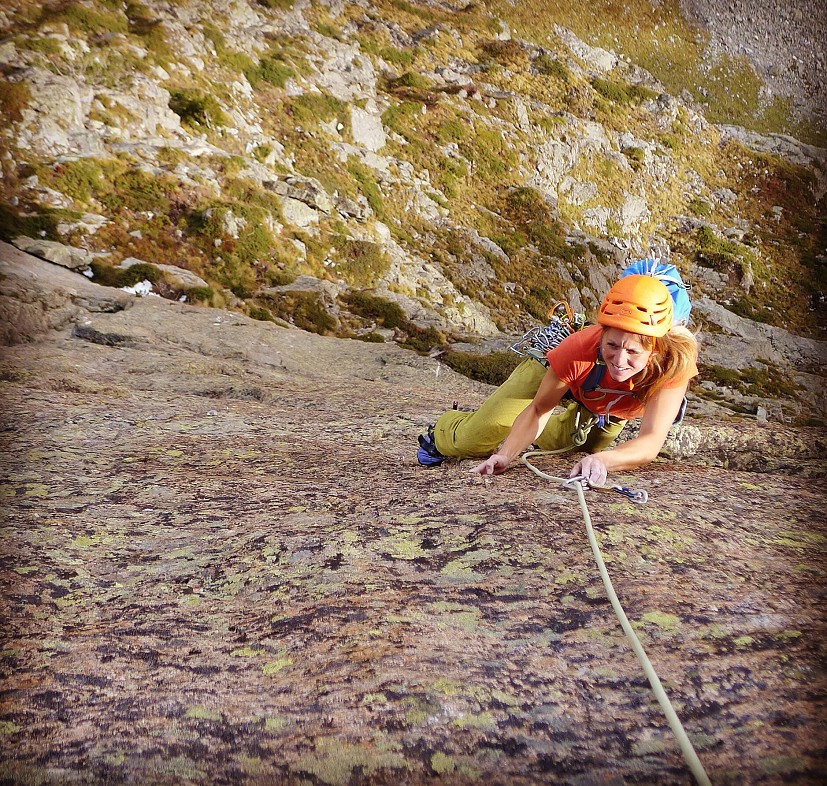
7. Where?
Here are a few suggestion to get you started in the Alps.
The climbing around the Cabane d'Orny on the Swiss-French border has great routes at Diff-E1, with most lines being 5-15 pitches. The granite is good quality and there are lots of nice options for bivi spots. There's a cute and affordable chair lift that leaves you with a pleasant couple of hours' traverse to the climbing.
L'Envers des Aiguilles above Chamonix has loads of lovely classic alpine rock climbing at VS-E2 and the routes are 8-25 pitches long, so you will get more practice at long descents. The walk from the valley takes about 4 or 5 hours and it's an idyllic escape from the world with a great view, running streams and lots of boulder caves to bivi in.
Around the Argentière Refuge - also above Chamonix - there are a lot of quality rock routes which suit the VS-E4 climber and this is a good spot to spy out some classic alpine snow and ice lines and chat to people in the hut about mountaineering options.
Further south in France in the Écrins, the Aiguille Dibona sits in a beautiful valley with no need to take a telecabine. The routes are around 12 pitches long and suit the HS-E1 climber.
The Dolomites offer loads of options for progressing your trad climbing into alpine climbing - especially if you like limestone and the beverages of Italy.
The Furka pass in Switzerland has a lot of quality granite crack climbing on lots of different buttresses rising from a fluffy cottoned alpine meadow only a short walk from the car.
The Salbitschijen in the Swizz canton of Uri is a romantic spot with a range of long routes from Diff to E1. It's a pretty quiet mountain apart from the two classic ridge routes. The Salbitschijen is a low peak which is south facing so it's a good option for slightly cooler times.
The list goes on as there's a lifetime's worth of rock climbing in the Alps. And the beauty is that they're all linked together, so when you glance out from your belay you'll spot something or somewhere to dream about for another day.



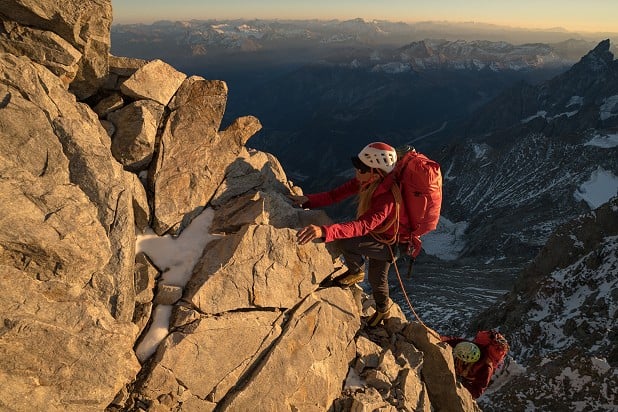
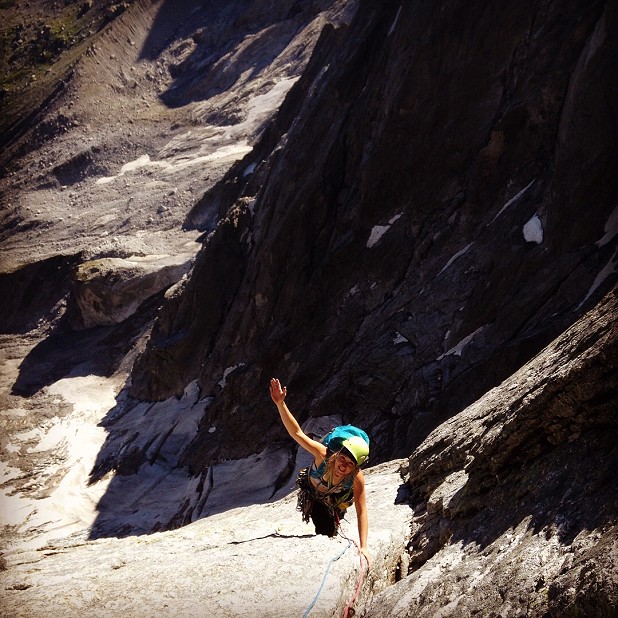
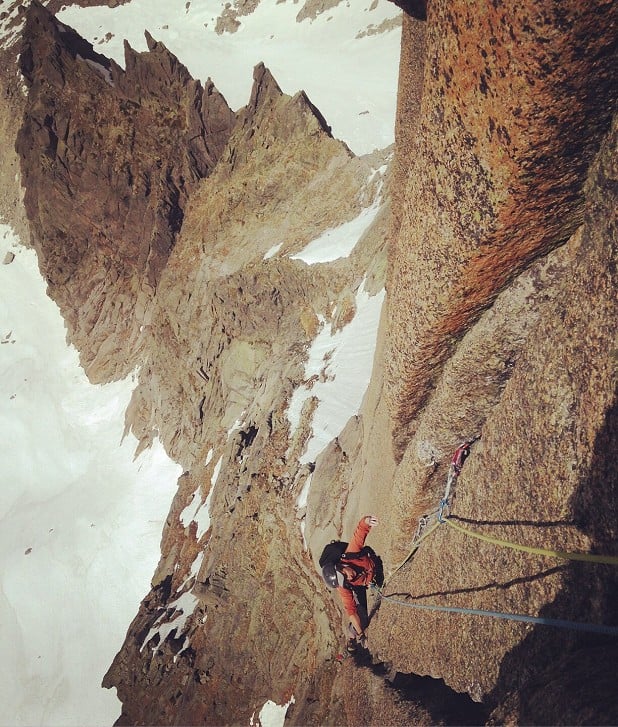
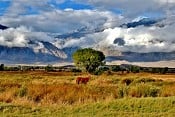
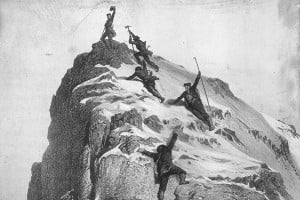
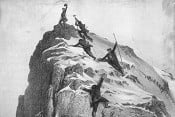
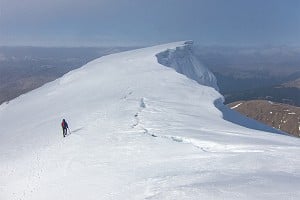
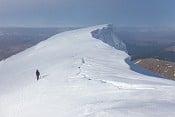








Comments
Great article. Another location I'd really recommend is the Alpes Maritimes (just N or Nice, or W of Cuneo). Pretty much everything can be done in a day from the roadhead, and is suitable for a HS - E1 climber. No glaciers either...
Excellent article.
Feel I wouldn't be doing my due diligence as a trustee if I didn't also mention that if cost is a barrier for you, The Jonathan Conville Memorial Trust offer subsidised Alpine Mountaineering Courses where we cover 50% of the course cost. If you're not sure how to make a start in alpine climbing, it's a great entry point for those aged 18-30. And applications are currently open for our 2023 courses... https://www.jcmt.org.uk/courses